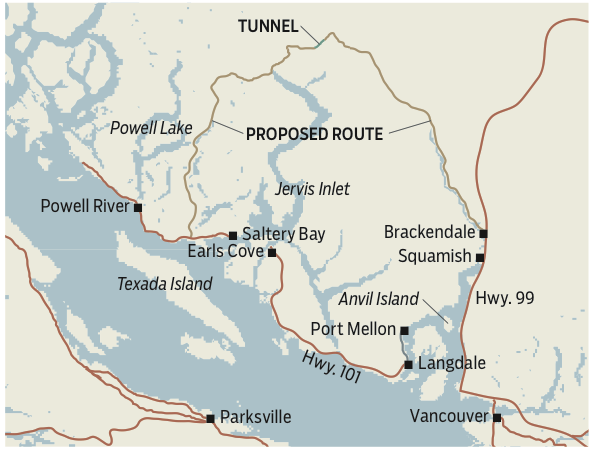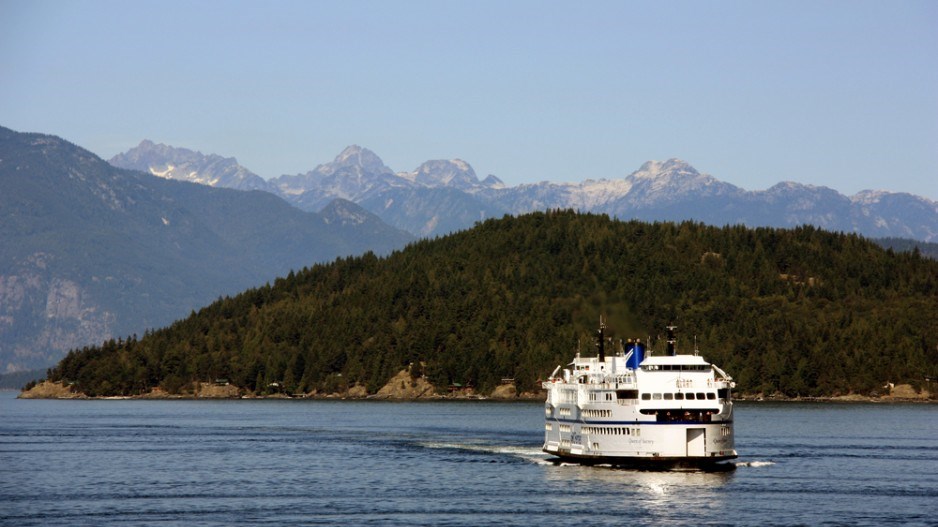By Jen St. Denis. Cuts to BC Ferries services on the Sunshine Coast have led to long wait times for tourists and commuters, particularly over long weekends | Shutterstock
It's a pie-in-the-sky idea that’s been talked about on the Sunshine Coast for decades: linking the picturesque region – population 30,000 – to the Lower Mainland via a highway or a combination of bridges.
In early February, the government awarded a $250,000 contract to engineering firm R.F. Binnie to study options that could include an overland route from Powell River to Squamish or bridging Howe Sound via Anvil Island. Both would be ambitious projects involving building multiple bridges or hundreds of kilometres of road through unpopulated mountainous terrain.
“This is the first attempt at trying to put some serious numbers to what might be possible,” said Gibsons Mayor Wayne Rowe.
But critics say the Sunshine Coast study and a recently completed study of a bridge to Gabriola Island are poor responses to the real problem: cuts to BC Ferries service that have made it harder to live and do business in the coastal communities.
The feasibility study for Gabriola showed it would not be cost-effective to build a bridge linking the island to Nanaimo.
“There’s always been talk of [a fixed link], but I’ve never heard as much talk as I have in the last four or five years,” said Nicholas Simons, NDP MLA for Powell River-Sunshine Coast. “Some people would suggest the government has made the ferry service so bad that it’s created a greater demand for alternatives.”
Gabriola and the Sunshine Coast both saw reductions to ferry sailings in the last round of BC Ferries cuts in February 2014. Rowe said the cuts have had an immediate impact on Sunshine Coast towns like Gibsons, with increased waits for ferries during the busy tourist season.
“It’s difficult for our businesses to be competitive given the cost and reliability,” Rowe said.
The two studies are the result of provincial government consultations with coastal communities about ferry service in 2013 prior to the cuts, said Jordan Sturdy, Liberal MLA for West Vancouver-Sea to Sky.

The Powell River-based Third Crossing Society advocates building a 170-kilometre road linking Powell River to Squamish. Another option, according to the society, is to build bridges across Anvil Island to connect to Highway 99
During those consultations, the government heard widespread opposition to its plan to cut service to save funds on unprofitable routes.
The Sunshine Coast feasibility study will compare the highway or bridge alternatives to current ferry service levels. That doesn’t sit well with Simons.
“If you’re going to do a comparative analysis, you should do it on the basis of when the Sunshine Coast had adequate service,” he said.
Rowe said he looked forward to the results of the study.
“If it’s not in the cards, then let’s see what we can do to improve the ferry access.”
Rowe added that a highway link would likely change the small-town character of the Sunshine Coast, increase development pressures and raise house prices.
Currently, houses in the lower Sunshine Coast sell for around $350,000 to $400,000, but with a road link more people would commute to the Lower Mainland, as has started to happen with Squamish.
The province’s current approach doesn’t take into account the entire transportation system, said Peter Hall, an urban planning professor at Simon Fraser University.
“It’s an artifact of separating the ferry service from the highway system in terms of the centre of decision-making,” he said. “As a politician you know the two are connected … and you use the one in order to mollify resistance. But you’re not putting them together and looking at what is the best way to truly serve this population.” •




